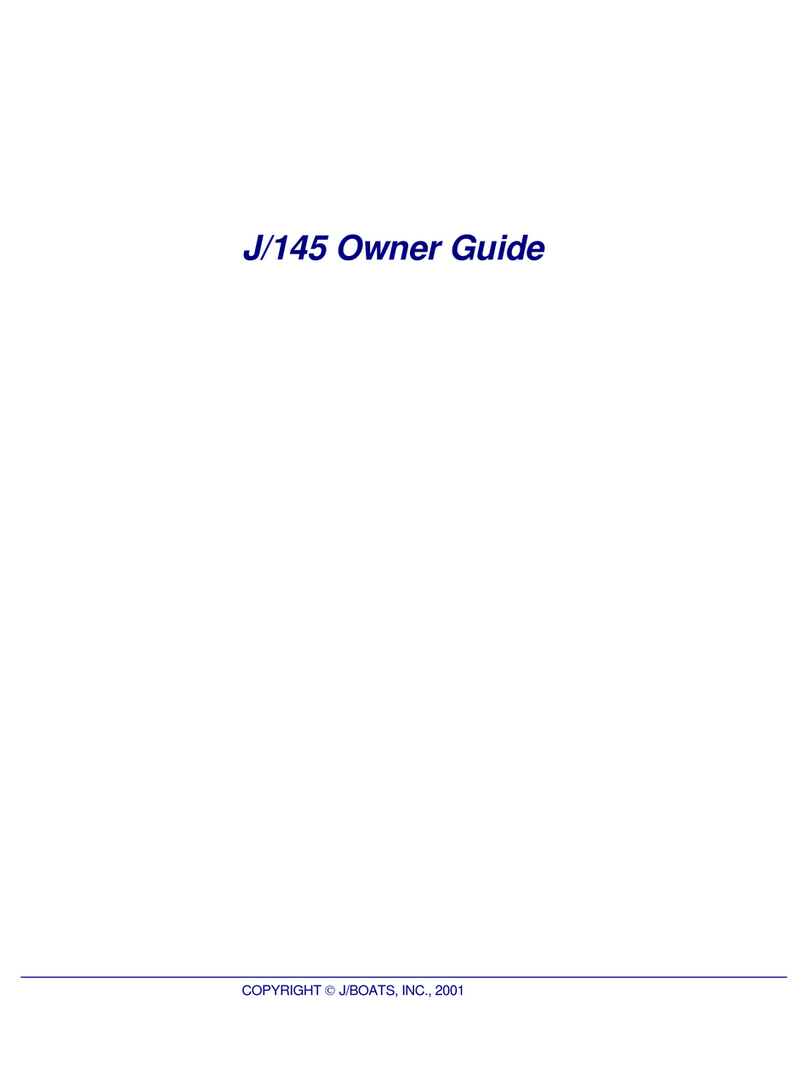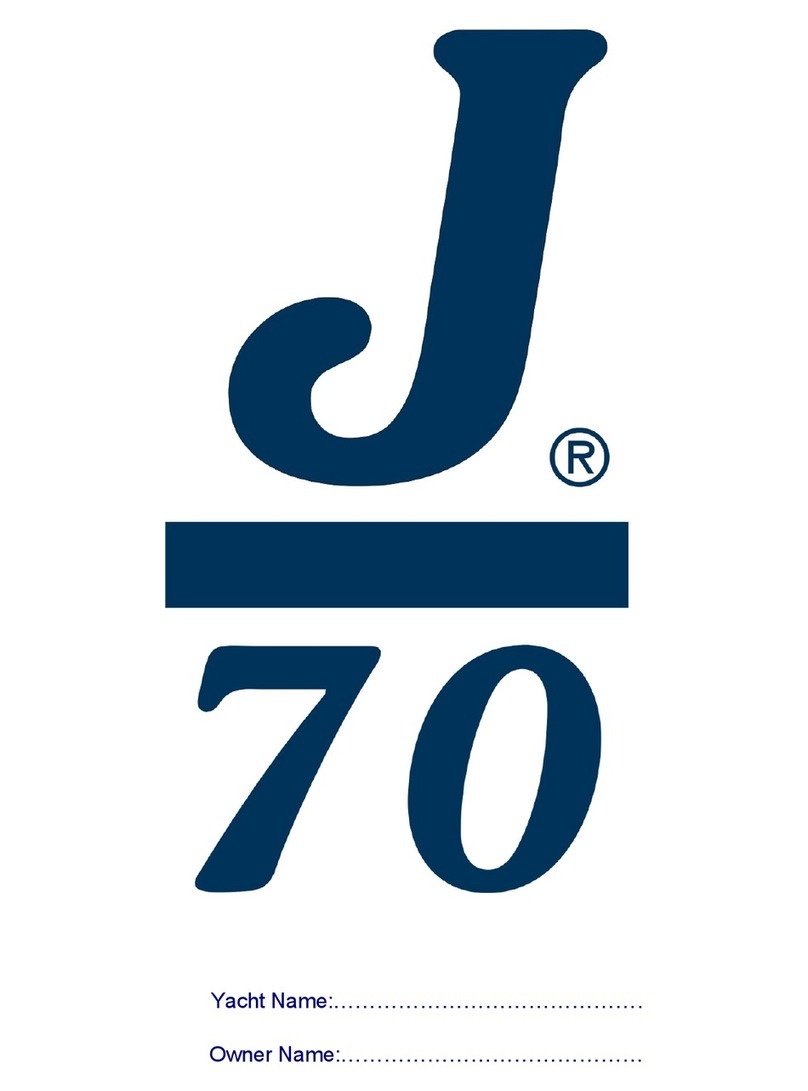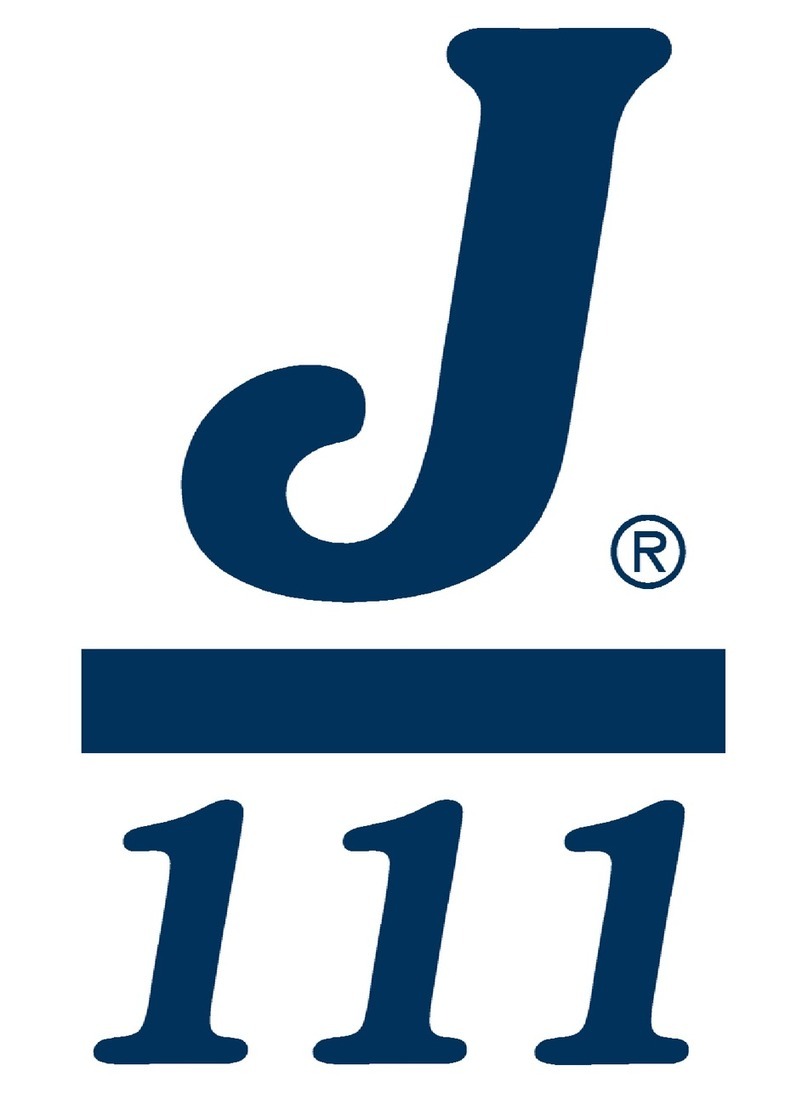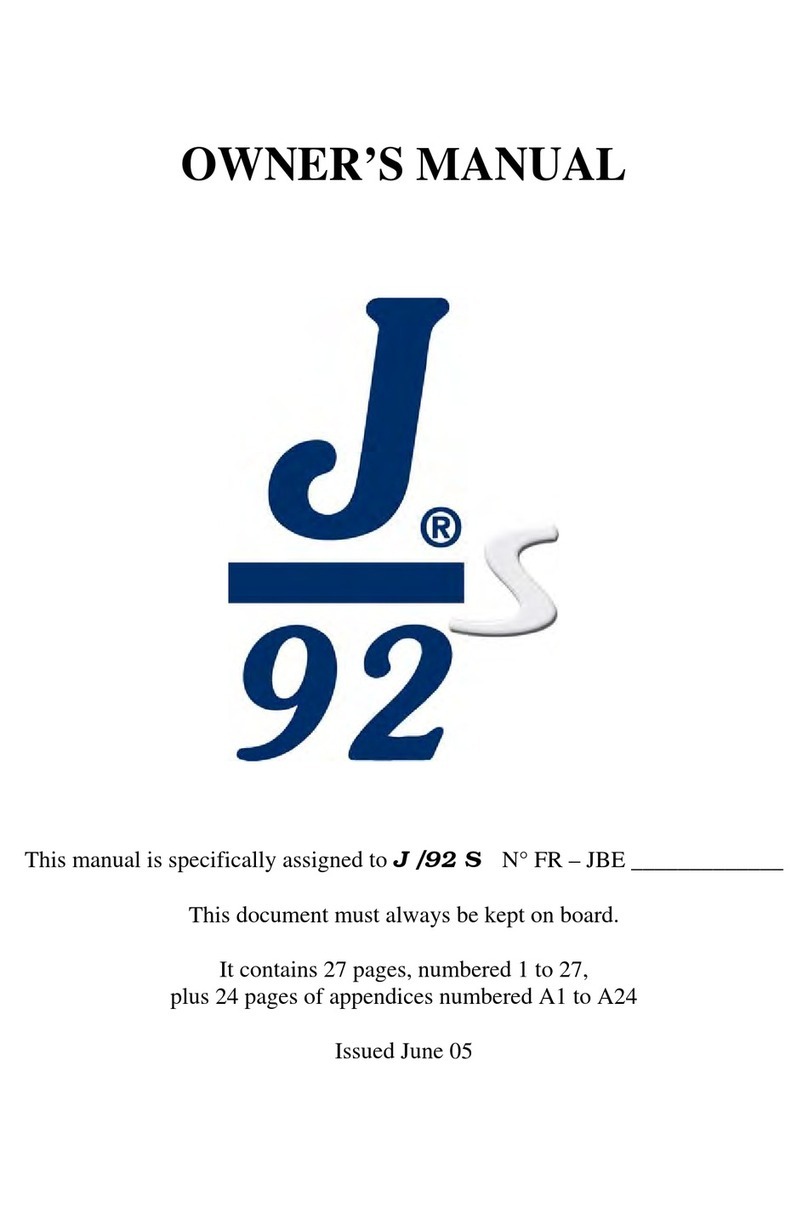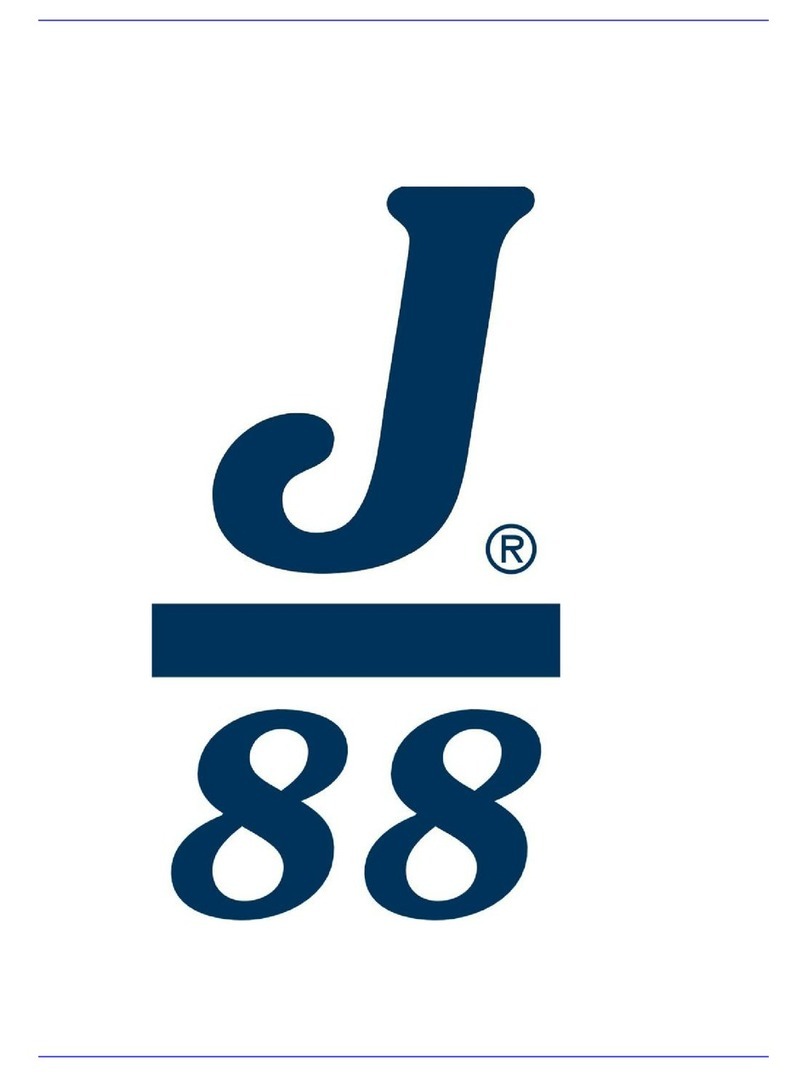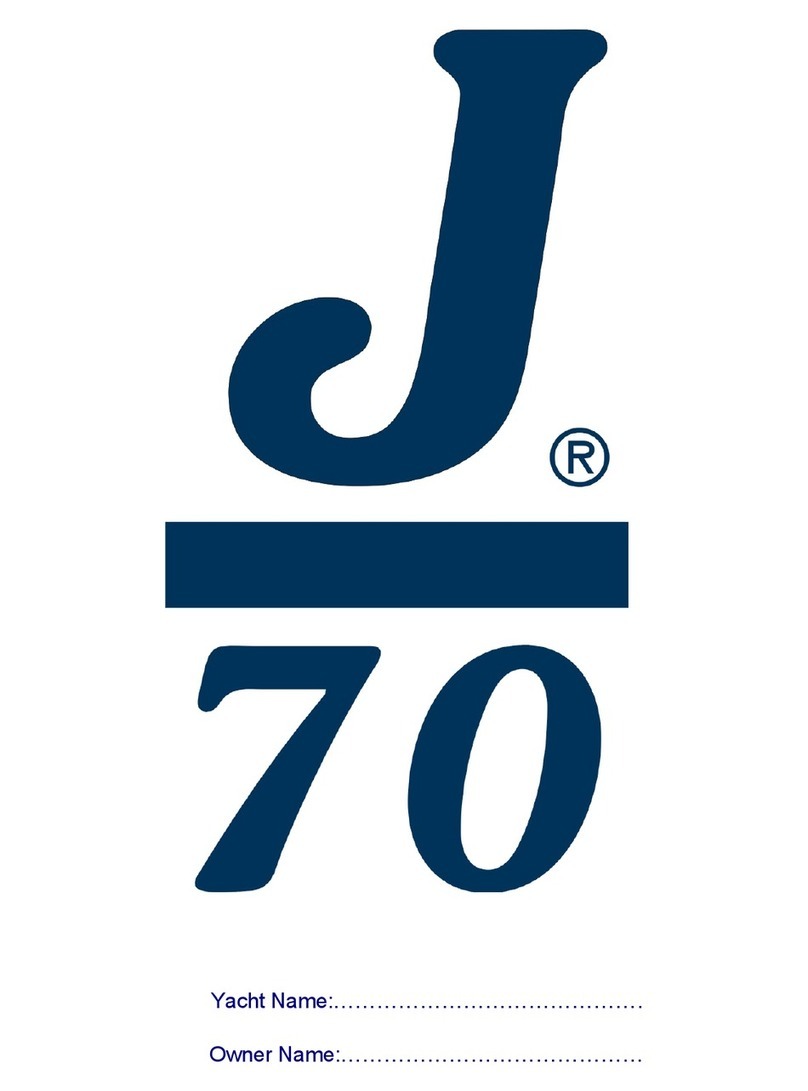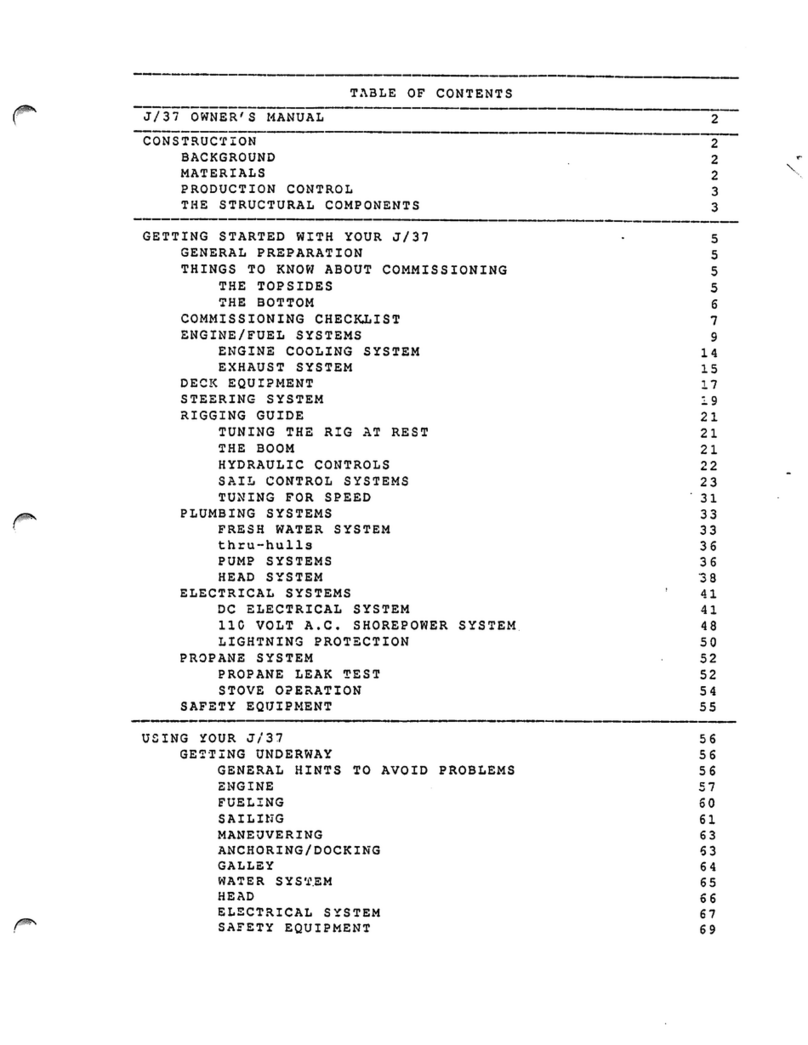
J/80 Owner Guide 9
Copyright
©
J/Boats, Inc., 2007
•Set mast step to middle position, and then tighten the aft two step bolts.
After Stepping the Mast:
•Center the mast: Establish reference points on the toe-rail abeam of the mast, by
measuring aft from the bow equidistant to both rails. Then hoist a metal tape
measure up the main halyard. Measure from rail to rail and adjust the upper
shrouds until the top of the mast is centered. The lowers and intermediates should
be slack.
•Tighten the uppers two turns per side until you reach a shroud tension of approx.
800 lb. as measured by a LOOS gauge. Then hand tighten the lowers so that the
mast is straight side to side while sitting up the mast track.
•Once straight, tighten the lowers two turns per side up to 600 lb.
•Finally, hand tighten the intermediates rechecking for straight alignment, and then
tighten to 300 lb.
•Tighten the backstay turnbuckles so that with the backstay line released, the
backstay bridle rests approximately 12 inches below the intersection with the upper
backstay.
New wire rigging will tend to stretch a little. Be prepared to go through this same tuning
procedure after your first day of sailing in a good breeze and check it periodically.
The J/80 comes equipped with BSI open body turnbuckles. Rather then pinning the
turnbuckles to prevent unwinding, simply take a short piece of messenger line and run it
through the bodies of the three turnbuckles on each side and tie a square knot. The
turnbuckles won't unwind, yet they're easy to get to for future rig adjustments. For the
backstay turnbuckles, tie a messenger line through the turnbuckle and around the stern
rail.
Sailing Tips
Cross-Sheeting the Jib- In most cases you will want to trim the jib sheet to the
leeward winch, there are times when “cross-sheeting” can be very fast. Cross sheeting
means trimming the jib sheet across the cockpit to the windward winch. This is
especially helpful in high wind and wave conditions when you want all the weight on the
rail AND the ability to constantly adjust the jib sheet. To cross sheet most effectively,
you have two options. 1) On the standard J/80, you can install a Wichard folding pad-
eye just forward and outboard of the primary winch and then shackle a Harken ratchet
block to it. 2) If your boat is equipped with the optional genoa tracks (for PHRF sailing),
simply run the jib sheet through a block on the genoa track and sheet across the
cockpit.
Spinnaker Handling- The J/80 is equipped with a foredeck hatch which is wonderful
for ventilation and spinnaker handling while daysailing, but most J/80 racers deploy the
spinnaker out of the main companionway. For this reason, it is very important to tape
up anything that can potentially rip the spinnaker. This includes the boomvang/boom
intersect, the shroud bases and any visible ring dings or pins. Some sailors have
rigged spinnaker bags that clip just inside the companionway opening, to help prevent
the spinnaker from tangling with loose gear below.
